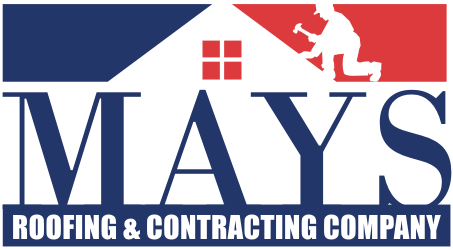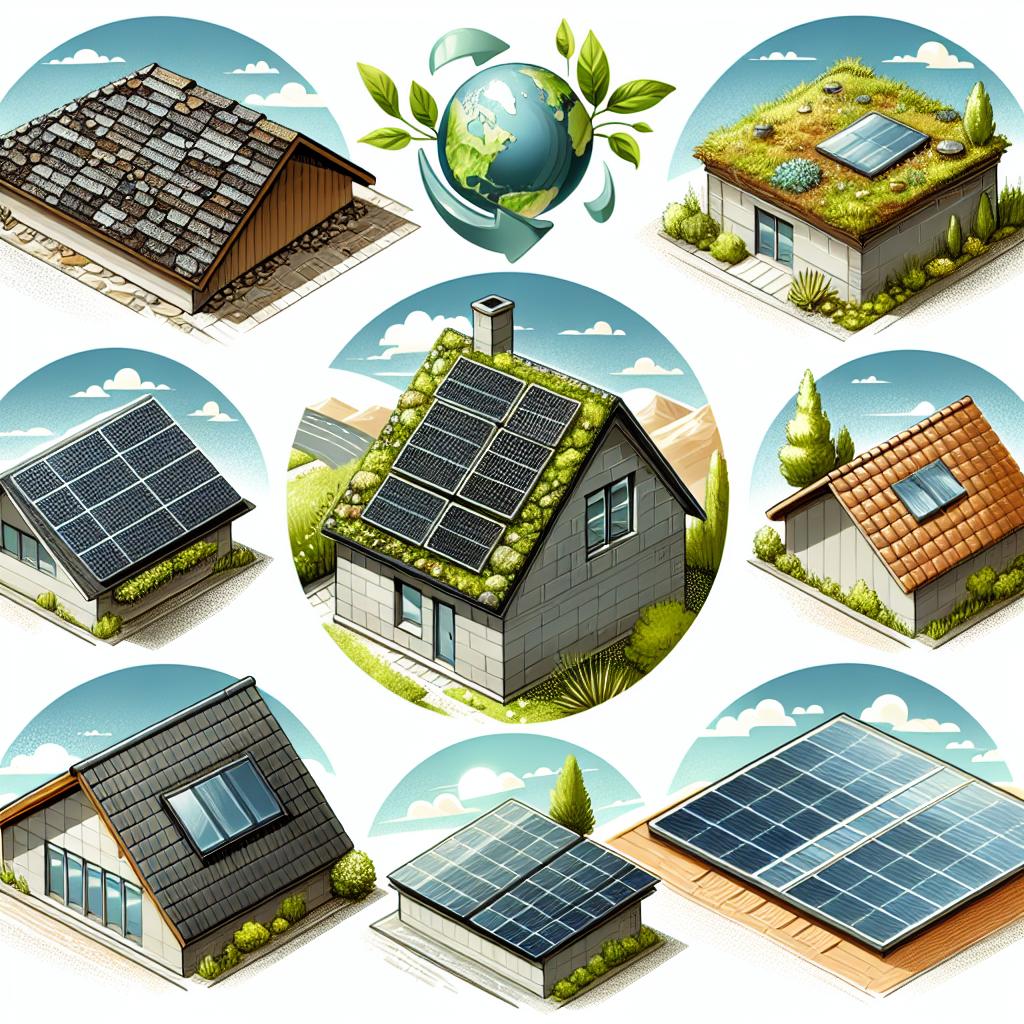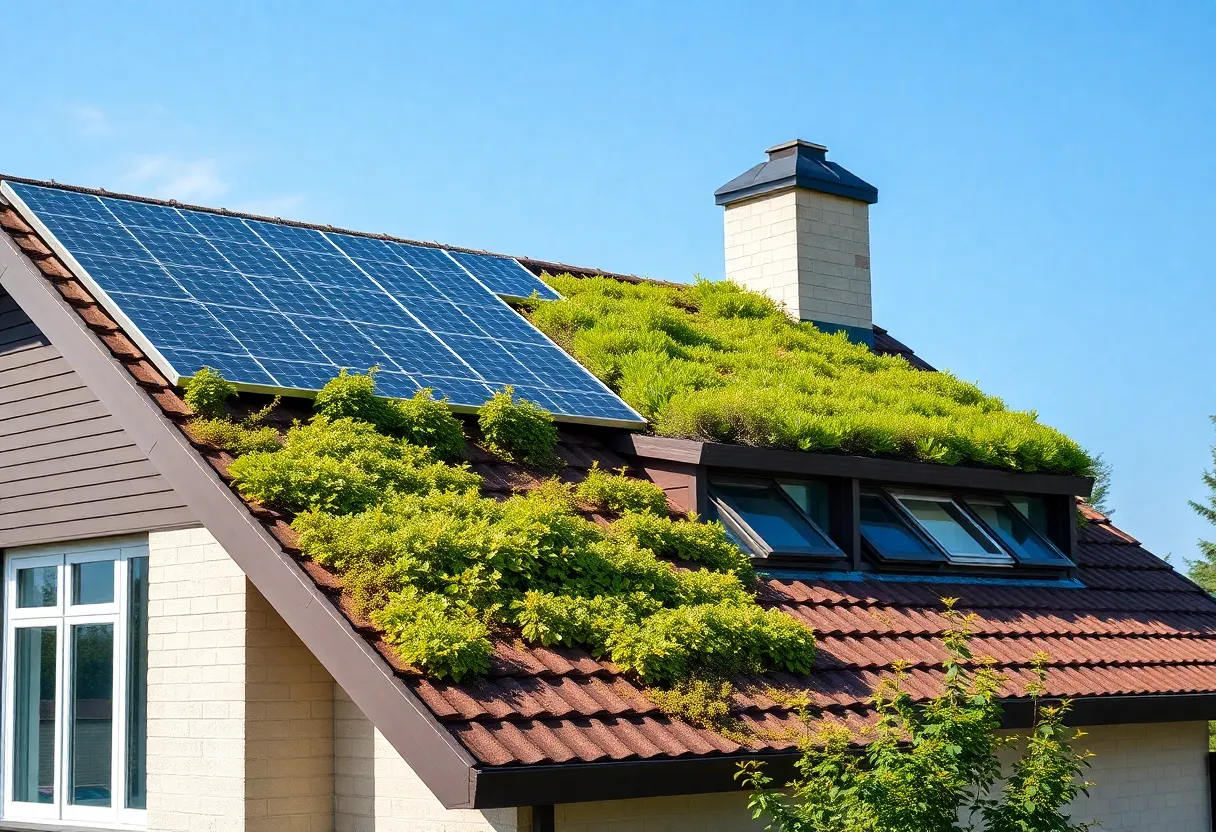How to Select Eco-Friendly Roofing Options for a Sustainable Home
Choosing the right roofing materials is essential for the sustainability of your home. Eco-friendly roofing options provide benefits not only to the environment but also to homeowners, including energy efficiency and longevity. This article serves as a detailed guide to navigating the various eco-friendly roofing materials available today.
Understanding Eco-Friendly Roofing
Eco-friendly roofing refers to materials and installation practices that have minimal environmental impact. These options help reduce energy consumption, improve indoor air quality, and support sustainability efforts.
Key Characteristics of Eco-Friendly Roofing
- Materials: Must be sourced sustainably or recycled.
- Energy Efficiency: Capable of reflecting solar energy to reduce cooling costs.
- Longevity: Should have a long lifespan to minimize frequent replacements.
- Low Maintenance: Requires less upkeep, reducing overall resource consumption.
Popular Eco-Friendly Roofing Materials
Various eco-friendly roofing materials can be used when constructing a sustainable home. Below are some of the most prominent options:
Metal Roofing
Metal roofing has gained popularity due to its durability, longevity, and recyclability. Here are some key benefits:
- Recyclability: Metal roofs can be recycled entirely at the end of their life cycle.
- Energy Efficiency: Reflective coatings can reduce cooling costs.
- Weight: Metal roofs are lightweight, putting less structural stress on buildings.
Slate Roofing
Slate is a natural stone material known for its durability and aesthetic appeal. Its benefits include:
- Longevity: Slate roofs can last over 100 years with minimal maintenance.
- Natural Material: Comes from the earth, making it a sustainable option when responsibly harvested.
- Fire Resistance: Non-combustible, offering excellent safety advantages.
Clay and Concrete Tiles
Clay and concrete tiles are also eco-friendly roofing options with several advantages:
- Thermal Mass: Help regulate indoor temperatures by absorbing heat during the day.
- Recyclable: Both types can be recycled at the end of their life span.
- Durability: Resilient to harsh weather conditions and UV rays.
Green Roofs
Green roofs consist of vegetation planted over a waterproofing membrane. Their benefits include:
- Air Quality Improvement: Plants absorb CO2 and improve air quality.
- Stormwater Management: Help reduce runoff and manage rainfall effectively.
- Insulation: Provide natural insulation, improving energy efficiency.
Factors to Consider When Choosing Roofing Materials
When selecting eco-friendly roofing options, several key factors must be taken into account:
Climate and Weather Conditions
Different roofing materials perform better in specific climates. For example, metal roofs excel in hot climates, while clay tiles are preferred in areas prone to heavy rain.
Lifespan and Maintenance
Select materials that not only last long but also require minimal maintenance. This reduces resource consumption over time and contributes to sustainability.
Cost-Effectiveness
While eco-friendly materials may have a higher upfront cost, consider long-term savings in energy efficiency and maintenance. Analyze the return on investment of choosing sustainable options.
Installation and Professional Help
Proper installation of eco-friendly roofing is crucial for achieving its intended benefits. Always consider hiring certified professionals who understand sustainable practices and local building codes.
Understanding Local Regulations
Be aware of local zoning laws and building codes that could impact your choice of roofing materials. Some areas offer incentives for using renewable materials; take advantage of these opportunities.
Enhancing the Eco-Friendliness of Your Roof
Beyond selecting sustainable materials, there are additional methods to enhance the eco-friendliness of your roof:
Adding Insulation
Proper insulation not only enhances energy efficiency but also prolongs the lifespan of your roofing materials. Ensure that your home is well-insulated to maximize energy conservation.
Installing Solar Panels
Solar panels can be installed on eco-friendly roofs, converting sunlight into energy. This addition not only lowers energy bills but also provides renewable energy.
Conclusion
Selecting eco-friendly roofing options for a sustainable home involves careful consideration of materials, climate, costs, and installation. Understanding the benefits of various materials will guide homeowners in making informed choices that align with their sustainability goals. By investing in eco-friendly roofing, not only does one contribute to a healthier environment, but they also foster long-term savings and durability for their home.





 Mays Contracting
Mays Contracting


